Delaware birders are out in full force at this very moment and one of their main targets is migrating warblers. Warblers are small, colorful songbirds which flit actively from tree to tree picking off insects with what the field guides usually describe as thin pointed beaks (also known as ‘bills’). But are warbler beaks really all small and pointed? We have handled several warblers during the Delaware Nature Society’s bird banding project and a closer view reveals a surprising amount of variation in the size, shape and color of their beaks.
The Northern Parula is one of the smallest warblers and has a very thin and pointed beak which it uses like fine tweezers to glean tiny arthropods from leaf surfaces.
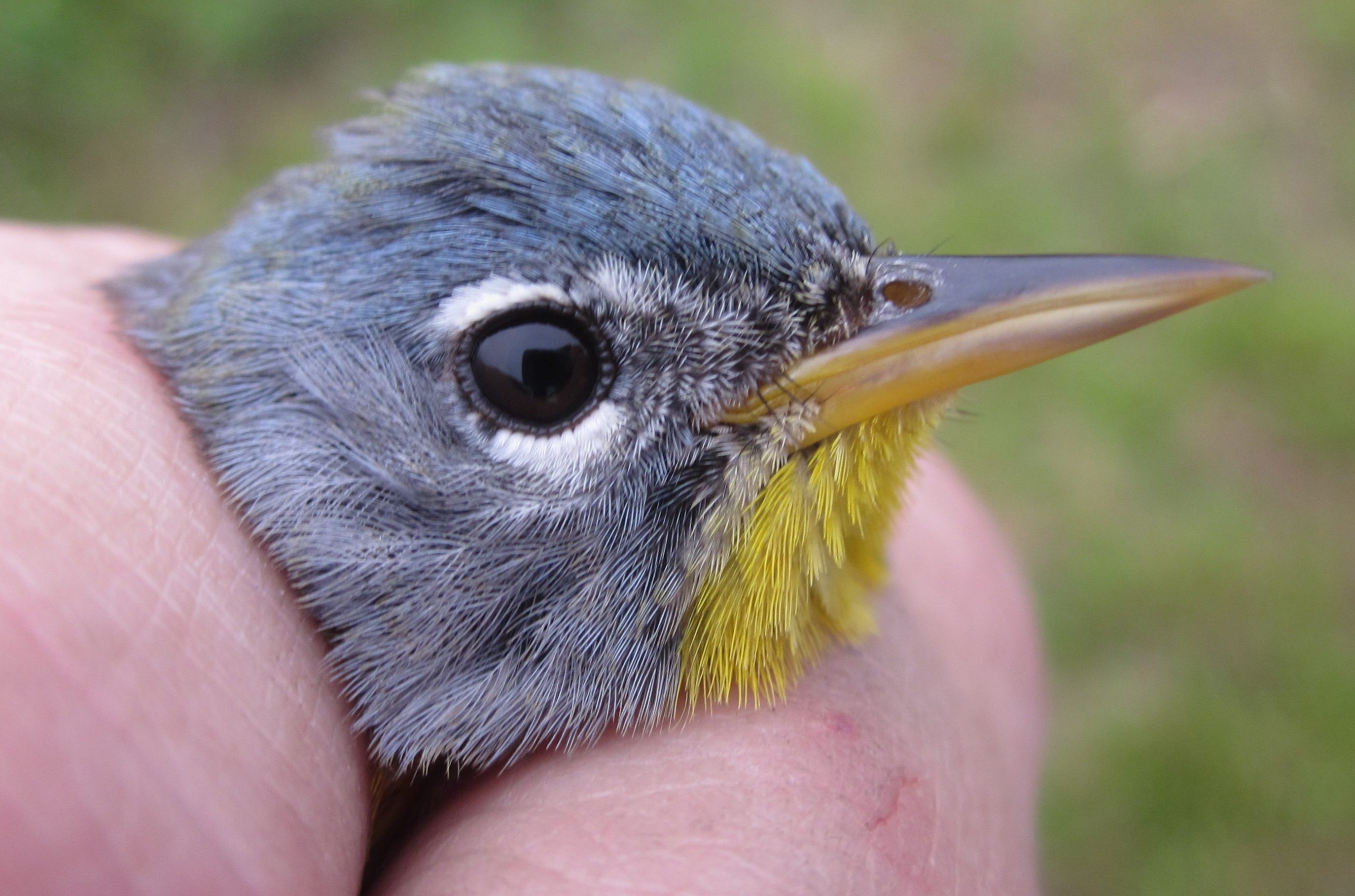
The Prairie Warbler also has quite a sharp beak but it is shorter and more rounded than the Parula’s. Its beak is jet black unlike many of the other warblers beaks which are brownish two-toned beaks with the upper mandible being darker than the lower.
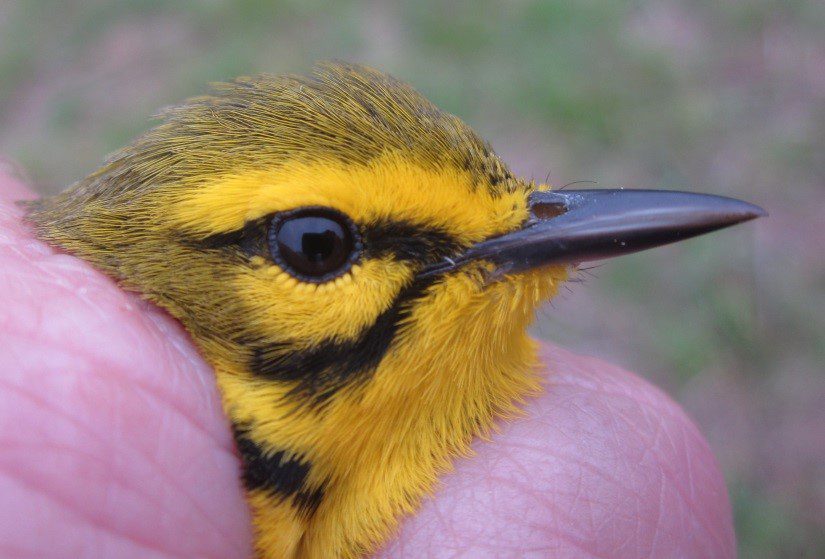
The Mourning Warbler has a fairly substantial bill for a warbler. Mourning Warblers tend to feed on or near the ground and perhaps eat larger insects or grubs.

Waterthrushes are relatively dull, streaky warblers that live along streams where they pick arthropods from the surface of the mud and rocks. There are two species, the Louisiana and the Northern, which look very similar but can be partly distinguished by their beak length. The Louisiana was once known as the ‘large-billed waterthrush’ and you can see from these photos that these warbler beaks are indeed longer and a little heavier than the Northern.
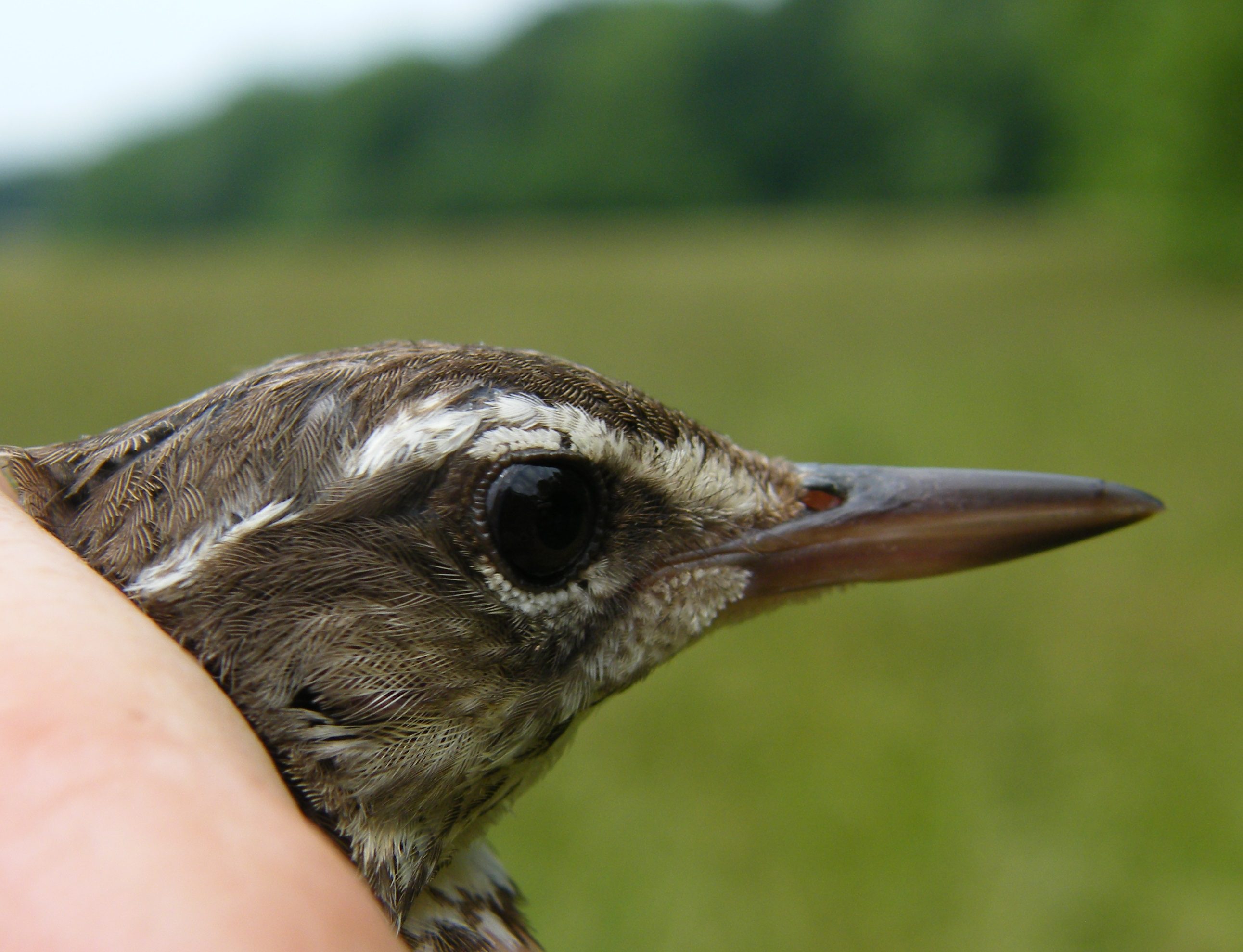
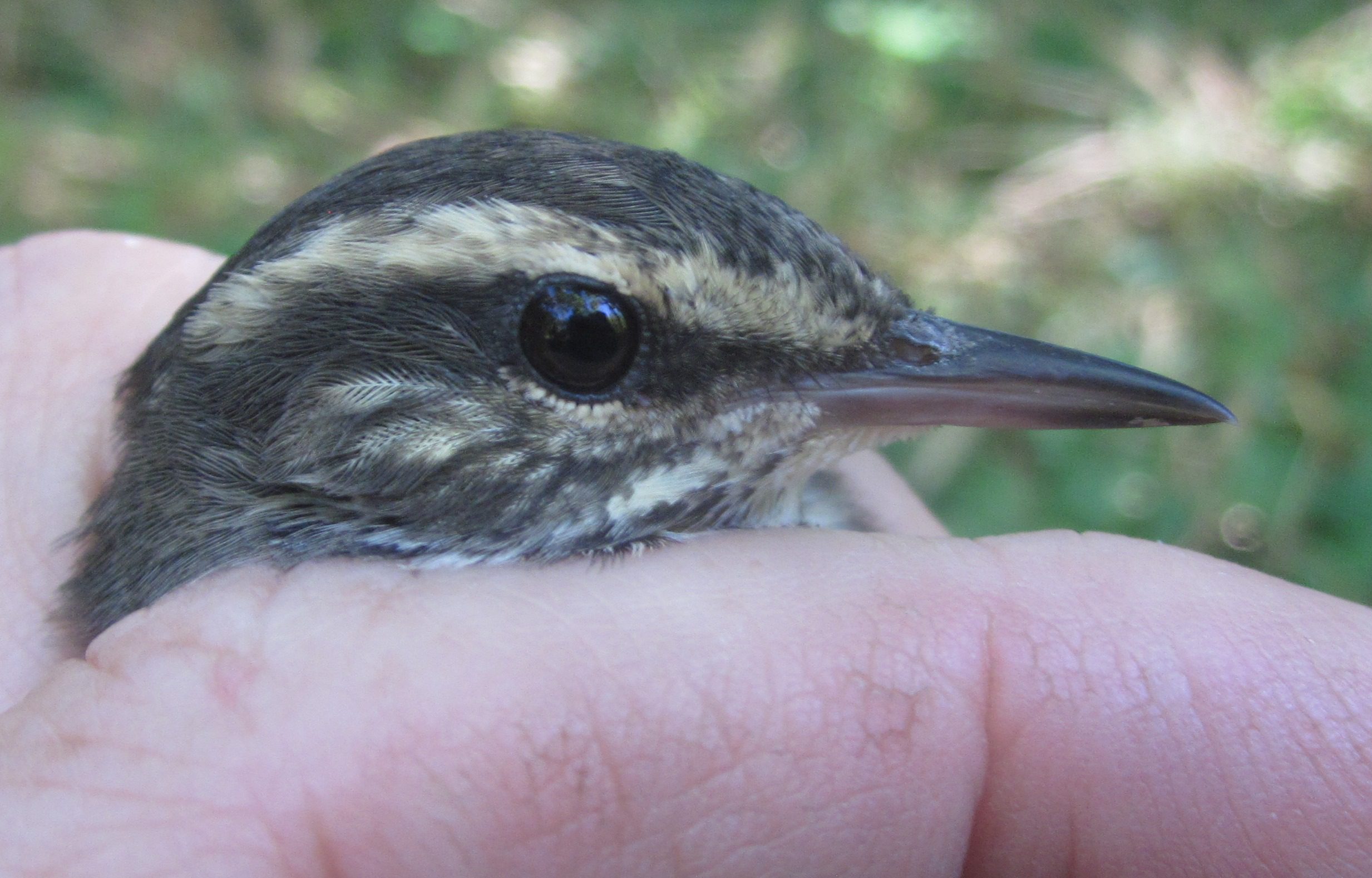
The American Redstart has an unusual beak for a warbler. When seen from above (or more commonly, from below!) its beak is broadly triangular and looks more like that of a flycatcher than a warbler (see the photo below). It’s probably no coincidence that Redstarts often feed by leaping off branches and grabbing insects in mid-air. The conspicuous bristles around the base of their beak may help them trap these insects.
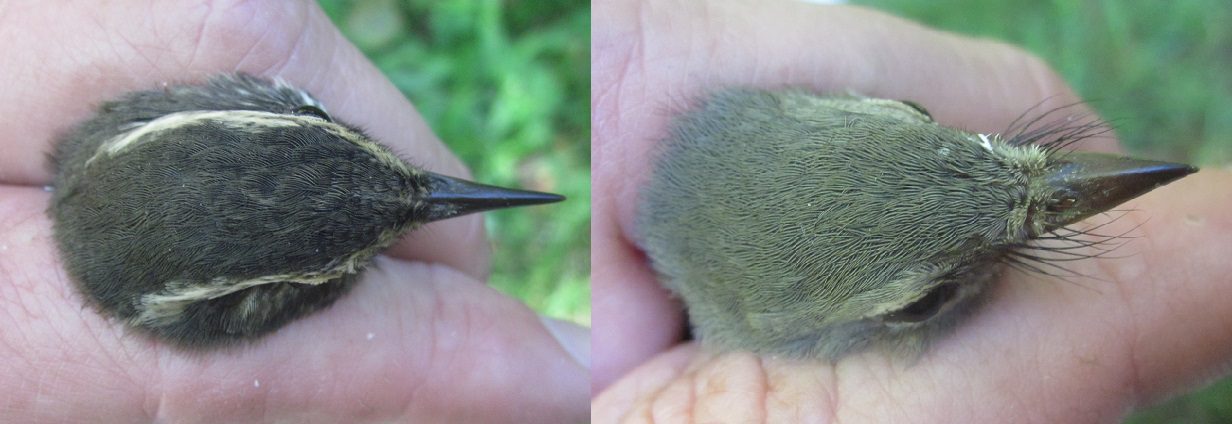
Another warbler with an unusual beak is the Yellow-breasted Chat. The Chat is a large, stocky bird that some people do not even consider a warbler, and it has a correspondingly huge, stout beak with a rounded upper mandible. Chats have such a big beak that they can chomp on insects such as grasshoppers that that are too big for the other warblers and can also eat berries.
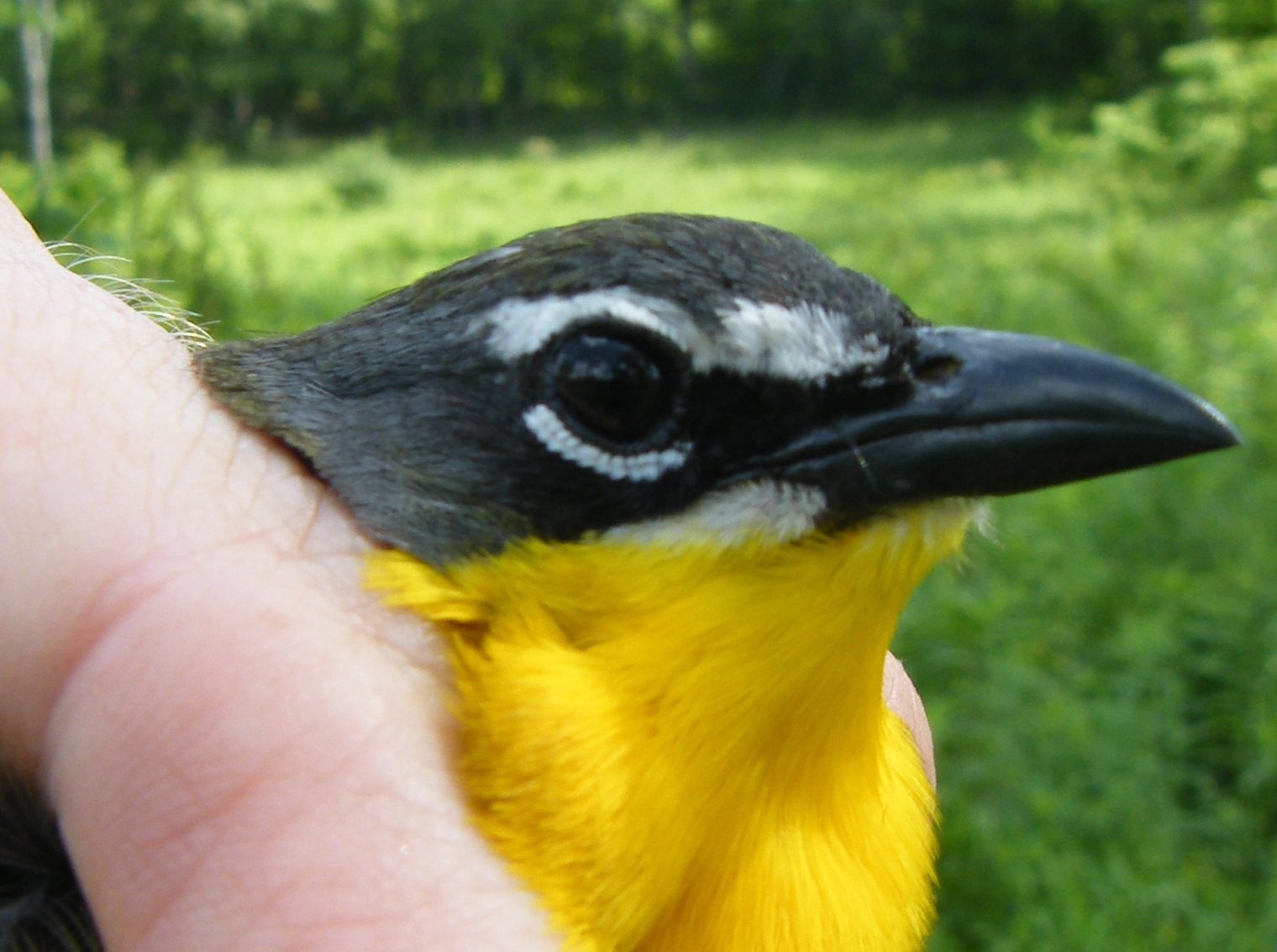
Insects and other arthropods are the staple food of all warblers and yet the variation in the size and shape of their beaks suggests that each species eats different prey. This partly explains why some species are usually seen actively hunting in the upper canopy of either deciduous or pine trees while others creep slowly around on the ground, perhaps waiting for an arthropod to emerge. Warblers are passing through Delaware as we speak so next time you see one, take a good look at its beak and see if you can guess what it feeds on!